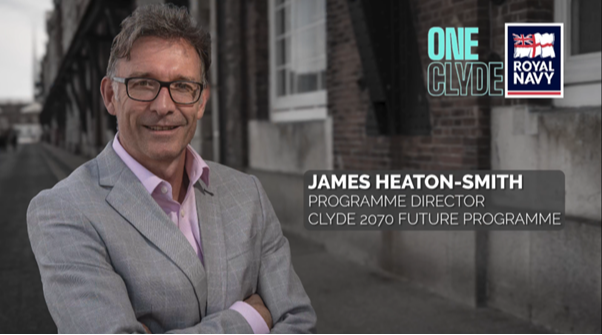Exclusive Content

Innovation to Improve Utility Infrastructure for U.S. Air Force Installations Worldwide
Download Dr. Richard Hartman's presentation from Defence Estates & Infrastructure 2024
Titled "Innovation to Improve Utility Infrastructure for U.S. Air Force Installations Worldwide," the presentation covers:
• Energy assurance as mission assurance
• Meeting the challenge of clean, firm energy in diverse environments
• Advancing technology, business processes, collaboration, and bold thinking

Defence Estate Optimisation (DEO) snapshot
Launched in 2016 in support of the 2015 Strategic Defence and Security Review, the Defence Estate Optimisation (DEO) Portfolio is one of the UK’s most ambitious long-term infrastructure programmes. Its goal: to modernise, reduce, and improve the defence estate so it better supports future military capability.
This infographic provides a snapshot of the DEO Portfolio. The DEO aims to reduce the size of the built estate by 30% by 2040, ensuring it is better aligned with the needs of a modern, agile military force. The infographic highlights key milestones, from the programme’s inception to recent governance improvements and sustainability achievements.
It showcases landmark projects- past and present - that reflect how the estate is being reshaped to support operational readiness, troop wellbeing, and environmental goals. It also illustrates how three core organisations - the MoD, Defence Infrastructure Organisation (DIO), and Crown Commercial Service (CCS) - work in partnership to deliver this nationwide transformation efficiently and effectively.

Section 7.11 Explained: Infrastructure in the Strategic Defence Review 2025
The Strategic Defence Review (SDR) 2025 sets out the UK’s long-term defence priorities in response to a changing global threat landscape. It aims to strengthen capability, modernise infrastructure, and ensure the armed forces are prepared for future operational demands. Section 7.11 of the review focuses specifically on infrastructure, highlighting persistent underinvestment and the need for a more coordinated, well-funded approach across the Defence estate.
Key areas covered include:
* A new Recapitalisation Plan to prioritise investment and consolidate estate needs
* Urgent upgrades to Service Family and Single Living Accommodation
These themes will be explored in detail at Defence Estates & Infrastructure 2025, bringing together MOD leaders, industry, and stakeholders to plan the next phase of delivery.

Building the Future of Defence Infrastructure: Insights from SCAPE’s Caroline Compton-James
Ahead of the upcoming Defence Estates and Infrastructure Conference, we spoke with Caroline Compton-James, Deputy Chief Executive at SCAPE, to explore how the organisation is supporting public sector clients in delivering critical infrastructure projects with pace, innovation, and social impact.
With more than 25 years of experience across the built environment – including senior roles in both government and industry – Caroline offers a valuable perspective on the evolving defence landscape, the future of procurement, and the importance of effective public–private collaboration.
In this interview, she shares SCAPE’s current involvement in the defence sector, outlines upcoming framework developments, and reflects on the opportunities emerging from the latest strategic review.

2025 Attendee Snapshot
Take a look at the accounts and job titles you can expect to encounter onsite at Defence Estates and Infrastructure 2025.

Video Interview: James Heaton-Smith - Clyde 2070 Future Programme Overview
The future of the Royal Navy is being shaped today through long-term planning, strategic investment, and forward-thinking infrastructure development. In this exclusive interview, James Heaton-Smith, Programme Director of CLYDE 2070, provides a unique perspective on the decades-long transformation underway at Naval Base Clyde.
Speaking from His Majesty’s Naval Base Portsmouth, Heaton-Smith outlines how the Defence Infrastructure Organisation is setting the foundation for the future. He discusses how CLYDE 2070 is not only reimagining the naval base itself, but also ensuring it is equipped to support the Royal Navy’s evolving operational needs, technological advancements, and the wider defence strategy.
This conversation highlights the scale of investment, the importance of resilience and adaptability, and the long-term vision driving one of the most significant infrastructure programmes within UK Defence. Watch the full interview to hear directly from a programme leader at the heart of this transformation, and understand how today’s decisions are preparing the Royal Navy for tomorrow’s challenges.

Forward Operating Bases; Optimising for the Future by Tim Ripley
Forward Operating Bases are essential to providing support at the tactical and strategic levels of operation. However, as with many aspects of force deployment, FOBs must adapt to the new realities of increasingly volatile near-peer threats and the need for readiness. This calls us to rethink base deployment and operations. This article by defence journalist and author Tim Ripley explores the differences in the operating environment and the steps that must be taken to ensure FOBs remain relevant on the battlefield.

Infrastructure and Facilities for the NATO Alliance; Interview with Sébastien Seguin
As with many other Forces, the NATO alliance is rationalising how it provides infrastructure and facilities to the troops. This rationalisation results from several political, geopolitical, climatical, and cultural changes pushing for the revision of the future vision of Defence Estates and Infrastructure. To speak on this from a NATO perspective, we have Sébastien Seguin, Chief of Division, Infrastructure, Facilities and Support Services of the NSPA, who informs us of NATO’s goals and programmes and potential trends and futures.

Chairman Deep-Dive; Challenges, Trends and Future of Defence Estates & Infrastructure
To meet today’s national security challenges, Defence Estates must provide sustainable and affordable buildings and accommodations to support national defence needs while satisfying personnel's needs. While not mutually exclusive, the challenge is brought to bear when considering limited financial resources and efficiency goals. Defence Estates and Infrastructure brings together experts worldwide into one place to discuss these challenges and opportunities. Our chairman, Air Commodore James Savage, former Head of Accommodation in the Defence Infrastructure Organisation, will lead the discussion. In this interview, the Air Commodore will share his views on the state and future of DE&I.

Evaluating Low Carbon Technologies for the Defence Estate
Governments worldwide have committed to Net Zero to combat climate change. The UK, in particular, established a legal requirement to reach that target by 2050, which has implications for Defence Estates and Infrastructure. In this piece, we go through some of the most prominent technologies aiding defence in becoming a Net Zero organisation.



